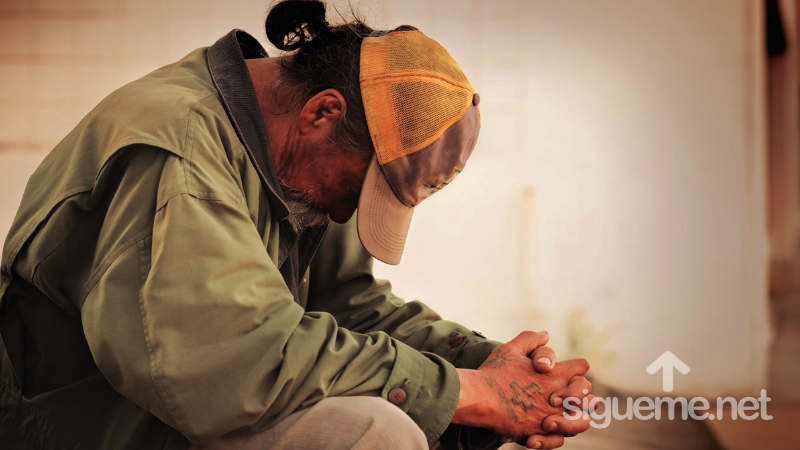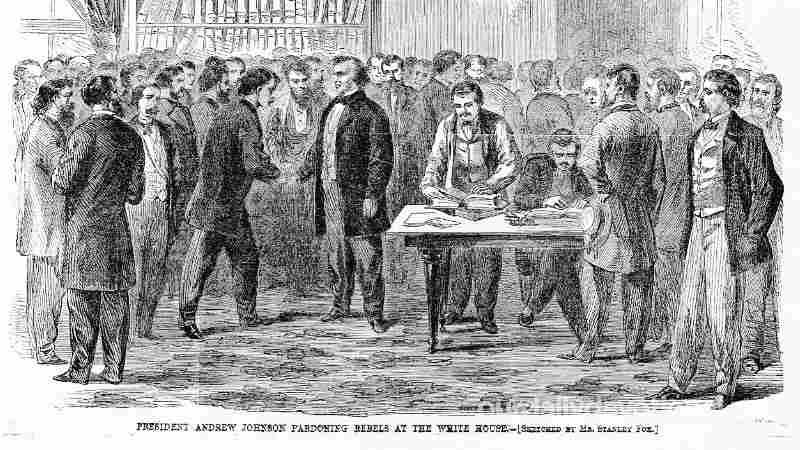The Bible mentions most of the precious stones known today, but it is sometimes difficult to find the exact correspondence between the names found in the original languages with those in our current nomenclature.
Three lists of these gems in particular can be highlighted: the twelve engraved stones of the high priest's breastplate (Ex. 28:17-21; 39:10-13); the nine stones of the ornament of the king of Tire (while in the LXX twelve are added, Ez. 28:13), and the twelve stones of the foundation of the New Jerusalem (Rev. 21:19-20).
Precious stones were used to: make priestly and royal ornaments (2 Sam. 12:30), offer rich gifts (1 Kings 10:2), serve as feminine adornment (Rev. 17:4), and decorate the Temple. (1 Chr. 29:2, 8; 2 Chr. 3:6), managing to accumulate great value in little volume (2 Chr. 32:27), serving as a seal (Ex. 39:14).
Certain passages indicate the origin of these stones (Gen. 2:12; 1 Kings 10:11, Jb. 28:6, 16-19, Ez. 27:16). Precious stones are frequently cited as symbols:
of celestial splendor (Ex. 24:10; Is. 54:11-12; Ez. 1:26; 10:1; Rev. 4:3), of resplendent beauty (Lm. 4:7; Song 5:14 ), of great value (Prov. 17:8; Jb. 28:16-19), of extreme hardness (Ezek. 3:9; Zech. 7:12; Jer. 17:1), of unalterable duration (1 Cor. . 3:12), and of a particular color (Rev. 9:17).
(a) Agate. (name derived from a river in Sicily, where these stones abound). It is presented under various species of colored quartz: amethyst, chalcedony and jasper. On the high priest's breastplate, agate was the center stone of the third row of precious stones (Ex. 28:19; 39:12). (Heb. "fat.") It is also mentioned in Rev. 21:19 as the third foundation of the New Jerusalem. See note at the end of this article.
(b) Amethyst. (The Heb. name, "ahlama," suggests the idea of a precious stone that causes delirium.) Stone of great value, the last of the third row on the breastplate of the high priest (Ex. 28:19; 39:12). The twelfth foundation of the New Jerusalem is amethyst (Rev. 21:20). It is a transparent variety of quartz. It is clear, purple or purple tending towards blue; it is believed that the origin of this color is manganese. The Hebrews could obtain amethyst in the country of Edom, in Egypt, Galatia, Cyprus, but the most beautiful specimens were obtained from India and Spain.
(c) Beryl. (A) Heb. "tarshish"; precious stone undoubtedly related to the place of origin of the first stone of the fourth row of the breastplate (Ex. 28:20; 39:13; Song 5:14; Ezek. 1:16; 10:9; 28:13; Dan. 10:6). None of the passages give any indication of the color of this stone. There are some commentators who translate the “tarshish” of Cnt. 5:14 for topaz and "tarshish" of Ex. 28:20 by chalcedony. In the LXX it is translated as chrysolite in Ex. 28:20; 39:13; Ez. 28:13, and as "anthrax," which is translated "carbuncle," in Ez. 10:9.
(B) The term gr. "beryllos" of Rev. 21:20 is translated as beryl, to designate the eighth foundation of the New Jerusalem. Beryl is a rock mineral, formed especially by silica and aluminum; It is usually green or bluish-green in color; It also appears in blue, pink, yellow, or aquamarine varieties; It is related to the emerald.
(d) Carbuncle. (A) Heb. "bareketh" and "bar'kath": bright as lightning (Ez. 28:13); the first stone of the second row of the breastplate (Ex. 28:18-19). In the LXX, Vulgate and Josephus it is not translated as carbuncle, but as emerald. (B) Heb. «'Ekdah», «radiance», «spark» (Is. 54:12).
Luminous stone that has the appearance of a burning coal. The LXX translates “anthrax,” in Latin. "carbunculus." According to the naturalist and mineralogist Dana, Pliny gives the name carbuncle to three different stones: the garnet, the ruby and the sapphire.
The garnet, which Pliny classifies among the carbuncles, is the noble garnet, also called oriental garnet, or almandine. Its transparency and color are magnificent. The most beautiful garnets come from Pegou, in Lower Burma. Ruby is spinel, light red or only translucent. As for the sapphire, see in its corresponding section.
(e) Choral. Heb.: "Ra'moth." This substance was classified among the most precious (Jb. 28:18). Aramaean merchants brought coral to the markets of Tire (Ez. 27:16). It was extracted from the Mediterranean and the Red Sea, and necklaces and amulets were made with it. Coral is the calcareous skeleton of ooze polyps. These are zoophytes with a mouth with tentacles.
The polyp fixed to the rock multiplies and forms polymers, analogous to small trees made of half-separated and half-attached zoophytes. The calcium carbonate that makes up the coral skeleton comes from water. Often, coral takes on the appearance of a beautiful branching tree, or a bush, hence its name zoophyte (animal with the appearance of a plant). Some species form large reefs.
The heb. "peninim" seems more uncertain. In Lm. 4:7 the King James Version translates “chorale,” along with most other versions. Some, however, translate "rubies"; The same King James Version translates this term as "precious stones" in Prov. 3:15.
(f) Carnelian or cornerin. Variety of chalcedony that the Greeks called sardium. Precious stone (Rev. 4:3) constituting the sixth foundation of the New Jerusalem (Rev. 21:20). The ancients called two types of stones sardiones, which they distinguished by their color: The transparent red variety, which is also a carnelian, but for which the name sardium is reserved.
Pliny says that the Sardians were found near Sardis, whence the name came, but that the most beautiful varieties came from Babylon. Today, the most beautiful carnelians come from India. Some come from Arabia. It is possible that the ancient Hebrews obtained them from the latter country.
In the OT, the term sardium translates the Heb. «'õdem», reddened stone; It appeared as the first stone in the first row of the breastplate (Ex. 28:17). The king of Tire adorned himself with it (Ez. 28:13, "cornerina"). There are exegetes who believe that they are rubies, but the LXX translates «'õdem» as sardium.
(g) Chrysolite. gr.: "golden stone." Mineral made up especially of silicon and magnesium; There are two varieties of chrysolites, one noble and the other common. The transparent gemstone is a light yellowish green; It is found in the Middle East; It is unknown whether Pliny's chrysolite, the one in the NT, was gold in color, or whether it was a topaz.
Chrysolite constitutes the seventh foundation of the New Jerusalem (Rev. 21:20).
(h) Chrysoprasus. gr.: "golden green stone." Variety of chalcedony with apple green tints, color due to the presence of nickel oxide. The best known comes from Silesia. Chrysoprasus forms the tenth foundation of the New Jerusalem (Rev. 21:20).
(i) Diamond. Mineral of incomparable hardness and shine; It is transparent and can acquire a wonderful polish. Diamond is pure crystallized carbon. It is believed that it had not been known among the Hebrews, nor even by the ancient Greeks. It is mentioned for the first time unequivocally by the Latin poet Manilius (around 12 AD), and Pliny describes it without possibility of confusion in his Natural History, which appeared two years before his death (79 AD). .
The stone that the Greeks and Romans knew as adamas (invincible) was possibly a type of corundum, the hardest stone after diamond. In the King James Version two terms are translated as diamond: (A) Heb. "Yahalom", precious stone (Ez. 28:13, translated "jasper" in this passage), the third of the second row of the breastplate of the high priest (Ex. 28:18; 39:11). The LXX translates "onyx." (B) Heb. "shamir", hard stone, carved into a point, for engraving (Jer. 17:1). In other passages the diamond is mentioned as a symbol of hardness (Ez. 3:9; Zech. 7:12).
(j) Emerald, (A) Heb. «nõphek». It was the third stone of the first row of the breastplate (Ex. 28:15, 18; 39:11). The Syrians carried this precious stone to Tire (Ez. 27:16); The Tyrians made ornaments with it (Ez.
28:13). It is not known exactly what precious stone it is, and it is difficult to distinguish between emerald and carbuncle, whether in the LXX, the Vulgate, or in the modern versions. (B) Gr. «smeragdos», precious stone of a beautiful green color. It is possible that it designated any crystal as green.
It was used as a seal (Sir. 32:8); the rainbow is compared to it (Rev. 4:3); It is the fourth foundation of the New Jerusalem (Rev. 21:19). Emerald is a variety of beryl; It is distinguished by its color, a bright green, of the beryl type, which ranges from pale green to light blue, yellow or white.
The color of beryl comes from iron, while that of emerald is given by chromium. Emeralds were found in the past in Cyprus, Egypt and the mountains of Ethiopia.
(k) Hyacinth. Precious stone that forms the eleventh foundation of the New Jerusalem (Rev. 21:20).
An allusion is made to its color (Rev. 9:17), which is uncertain. Some commentators think that it is a blue sapphire. The term Heb, sometimes translated as hyacinth, also appears in Ex. 28:19 where it designates the first stone of the third row of the breastplate. It is possible that it is an opal or amber (See also Opal in this same article).
(l) Jasper, Heb. «yãsh'pheh»; gr. "iaspis" (Ex. 28:20; Ez. 28:13; Rev. 4:3). Jasper is a variety of quartz: red, brown, yellow, green or gray, and opaque. The ancients gave the term jasper a broader meaning. According to Pliny, this term also designated a transparent or translucent gemstone, green in color (cf. Rev. 21:11), so it would be a type of chalcedony or agate. The LXX translates the Heb. term. by onyx.
(m) Onyx, From gr. "onyx", "nail". Hebrew translation "shõsham", which designates a precious stone (Jb. 28:16; Ez. 28:13), which was found in the country of Havilah (Gen. 2:12). Two onyx stones, each bearing the names of the six tribes of Israel, were fixed to the shoulder pads of the high priest's ephod (Ex. 28:9, 12).
The second stone of the fourth row of the breastplate was also onyx (Ex. 28:20). David gathered onyx for the Temple that his son was going to build (1 Chron. 29:2). This stone is a variety of agate (quartz) with stripes of different inks.
(n) Opal. heb. "Leshem", first stone of the third row of the breastplate (Ex. 28:19).
The LXX, Josephus (Wars 5:5, 7) and the Vulgate render "ligurian", a stone that has not been identified. It is possible that it is the hyacinth, as the Reina-Valera version translates it (see the paragraph above dedicated to the hyacinth stone). Amber has also been proposed.
(o) Ruby. For the meaning of "p'ninim" see CORAL. Rubies are mentioned in Is. 54:12; Ez. 27:16. In Cnt. 5:14 some versions translate "rubies" and Reina-Valera, "hyacinths." The meaning of the expression is uncertain and it is possible that it generally designates a red stone that translators interpret in various ways.
(p) Sardio. See CORNALINA in this same article.
(q) Topaz. gr. "topazion", probably Heb. "pit'dah." It was the second stone of the first row of the breastplate (Ex. 28:17; cf. LXX, Ant. 3:7, 5). It was located in Ethiopia (Jb. 28:19), and on an island in the Red Sea (Diodorus of Sicily, 3:38, 39; Pliny, Natural History 37:9). The Tyrians knew it (Ez. 28:13). It constitutes the ninth foundation of the New Jerusalem (Rev. 21:20). The topaz of the ancients was a yellow variety of corundum.
(r) Sapphire. heb. «sappîr»; gr. "sappheiros." It was the center stone of the second row of the high priest's breastplate (Ex. 28:18). It also constitutes the second foundation of the New Jerusalem (Rev. 21:19). The princes of Israel are compared to sapphires (Lm. 4:7)
The sapphire was a stone of great value (Jb. 28:16; cf. Song 5:14; Is. 54:11; Lam. 4:7; Ezek. 10:1; 28:13). Sapphire is a variety of transparent blue crystallized corundum (cf. Ex. 24:10), the other two being corundum itself and emery. The hardness of this stone is only surpassed by that of diamond.
It comes from India, Ceylon and Ethiopia Note: The agate that appears in Rev. 21:19 is a translation of "Chalkêdõn", "Kalkêdõn", from the city in Asia Minor. This is a variety of agate found in Chalcedon, in Asia Minor. Translated in the ancient revision of Reina-Valera as chalcedony (cf. also F. Lacueva: "New Testament interlinear Greek-Spanish", loc. cit.), it is translated in modern revisions as "agate."
(See Agate in this same article.) Chalcedony had been considered a different variety of flint, but is currently considered a variety of quartz; It is hard, being made up mainly of
silica; milky in color, it can also reach pale gray, brown, blue, etc. As it is not perfectly crystallized, it frequently presents quartz veins in nodules similar to the grains of a cluster, or stalactites.
This stone does not seem to have received the name chalcedony until the Middle Ages. It seems, therefore, that the apostle John wanted with this name to designate another stone, perhaps the Chalcedonian emerald or the jasper of this country, stones mentioned by Pliny (37:18 and 37).
Meaning of PRECIOUS STONES
The Bible mentions most of the precious stones known today, but it is sometimes difficult to find the exact correspondence between the names found in the original languages with those in our current nomenclature.







